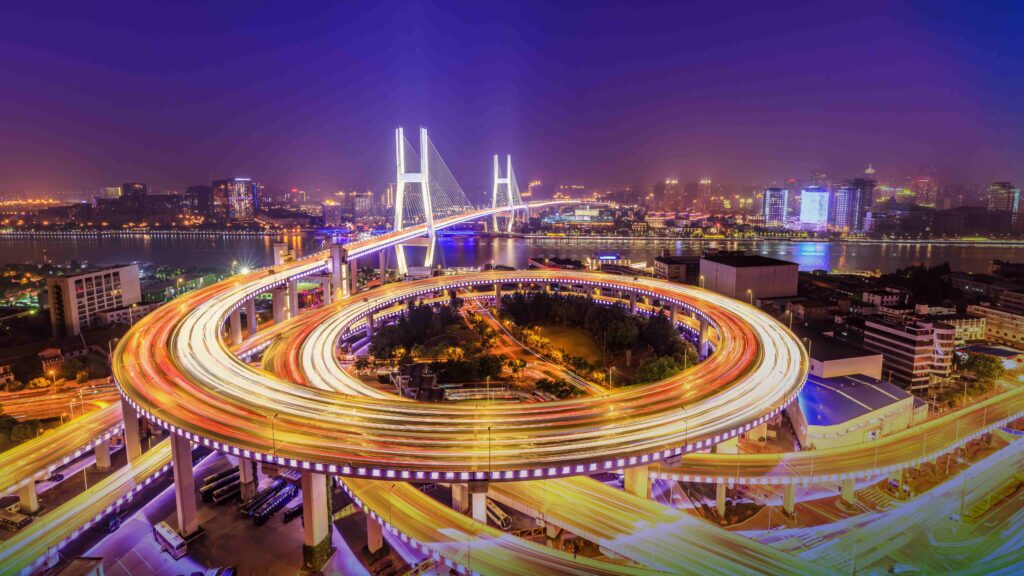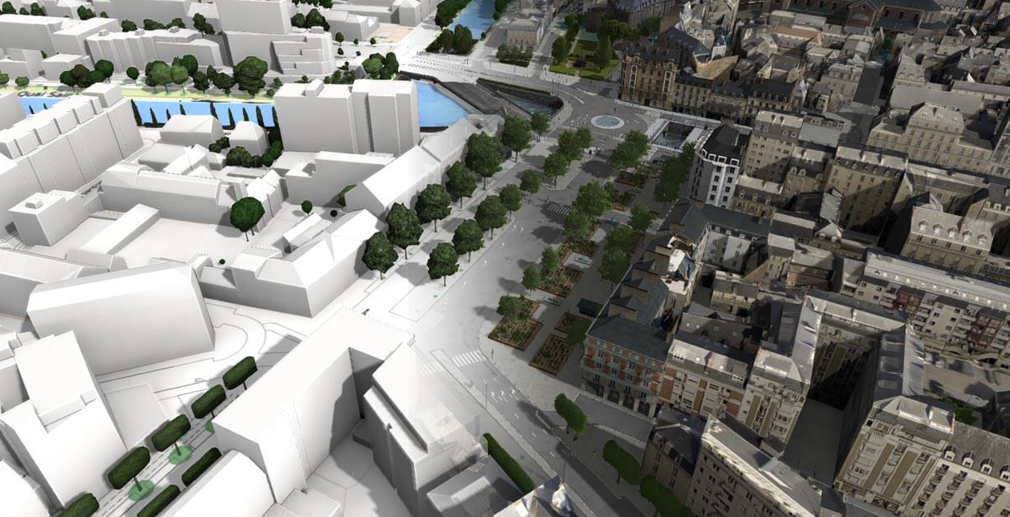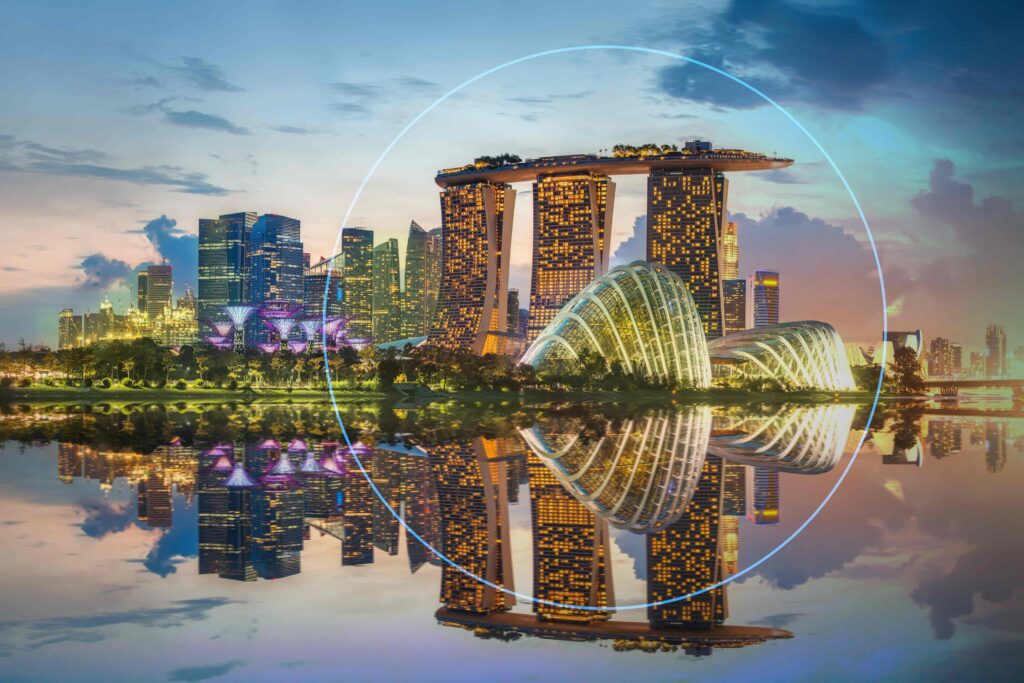Jakarta is sinking. Quickly.
The Indonesian capital faces a host of issues. A combination of its physical location in a low basin with 13 rivers flowing into it, rising sea levels from climate change, and illegal wells being dug by residents, the city is sinking and susceptible to flooding. On top of that, it’s overcrowded and is the most polluted city in the world as of 2023.
Fixing these problems has proved so tricky that the government decided to take a new route: they’re building a new capital city, Nusantara, a proposed city of the future, from the ground up.
The trials and tribulations of today’s urban areas
Nusantara’s construction is an ambitious project and not one free from controversy or difficulty. Building a brand-new city requires a perfect storm of politics, capital, land and more. Indonesia is now experiencing fallout as funding for the $33 billion+ project begins to dry up, and critics mount complaints, pointing out problems with the new city’s location on a sparsely inhabited island lacking Jakarta’s population, infrastructure and more.
Jakarta’s situation is hardly unique. Cities around the world are in a tough spot. They’re already home to half the world’s population and are expected to absorb billions more residents in the years to come. They’re expensive and becoming more so. They’re feeling the effects of climate change. Mitigation of these issues is challenging, and that’s putting it lightly.
In Venice, climate change is impossible to ignore. As sea levels rise, the daily floods that are a hallmark of the city continue to worsen, and some projections estimate the Italian island will be underwater by 2100. Florida’s hotspot destination Miami may soon face the same fate, as ever-more devastating hurricanes hit the city. Longyearbyen, the world’s northernmost city, can’t escape climate change either: cold as it is, it’s the fastest-warming city on the globe.
Besides environmental risks, urban locales around the globe are simultaneously growing rapidly while also becoming exorbitantly more expensive. Shanghai, a megacity, has added more than 15 million new residents since 2000 and the trend of population growth there is mimicked in cities across the Asian continent. In Istanbul, a growing city with more than 16 million inhabitants, housing prices skyrocketed over 300% between March 2023 and March 2024.

The possibilities of tomorrow: Brand-new cities
Given the challenges urban areas like these face, it’s almost a wonder that more governments aren’t taking the steps that Indonesia is. More often than not, it’s too difficult to start building a city from scratch, but the task, while tricky, isn’t impossible to pull off. It just depends on how it’s approached.
In the 1990s, a new urban design concept was taking off. New Urbanism prioritized walkability, sustainability and community. Today, it sounds idyllic, though it was perhaps ahead of its time. New Urbanism produced just one city of note: Seaside, Florida. Though it didn’t catch on the way its originators hoped, it opened the door for a new way of thinking about the future of urban areas.
That’s evident in Saudi Arabia’s construction of an entirely new region in the desert, which will eventually be home to a 170-kilometer-long linear city aptly named The Line. Nestled in the proposed new region of NEOM, The Line will be a 15-minute city, an urban locale in which all essential services will be accessible by foot, bicycle or public transportation within a quarter-hour. The difference between The Line and Nusantara, though, is the reason behind it. While Indonesia seriously needs a new capital, Saudi Arabia is testing the limits of current conceptions of urban areas because they can. The press release announcing the project highlighted that NEOM’s The Line “redefines the concept of urban development and what cities of the future should look like.”
The project is a nod to the notion that cities from scratch aren’t just a possibility but an opportunity for innovation. The cities of the future might take inspiration from the ones we live in today, but they also present a chance to dream up fascinating new ways of life. Creating them requires a new way of thinking and a toolkit that’s bolstered by emerging technologies that take dreamt-up ideas to reality.
Integrating sustainability for futuristic cities
If we’re dreaming up a city of the future, it’s possible to design it in a way that works for its residents and the environment in tandem. Making environmentally friendly decisions from the ground up is a real possibility for cities starting from the ground up.
From considering how buildings are constructed to where greenery is planted, there is unlimited potential for creating a green city from scratch.
“Cities can impose building regulations on new developments or support more specific measures, such as energy-efficient renovation of certain buildings. But they can also promote the creation of eco-neighborhoods aimed at attracting new residents,” explained Ismail Hamoumi, a business value consultant specialist in the Cities & Public Services Industry at Dassault Systèmes.
A holistic approach, viewing buildings as parts of an ecosystem, could be a core component of a future city’s ethos. Creating that eco-neighborhood might be done by using green steel for railway infrastructure projects, paving roads with sustainable concrete or using AI-powered traffic lights to reduce congestion and carbon emissions. Identifying new and sustainable ways to carry out necessary construction would be a viable way to produce an urban landscape that’s green from the ground up.
Rennes: Not new, but renewed
Before breaking ground, city planners need to consider not just where buildings will go or how tall they’ll be, but how they interact with one another to create a built environment. When the city of Rennes was planning to reinvigorate a neighborhood in the French metropole, they built a virtual twin on the 3DEXPERIENCE platform to see exactly this.

It contained reams of interactive, layered data, including air quality sensors and power demands across different neighborhoods, but it also showed how and when different buildings receive sun exposure and create shadows. With that information, they could best understand where to build solar panels so they’d collect the maximum amount of snulight to create renewable power sources for the city. It also helped them understand which plants might thrive in those areas, as adding greenery to urban areas is an excellent way to provide shade and fresh air, hallmarks of a livable place.
The twin also included an integration so that contractors could easily upload blueprints of potential buildings and citizens could add their input on the project. This level of collaboration is the cornerstone of virtual twins and is crucial for endeavors like these that need to take into account significant amounts of data, zoning restrictions, public opinion and more.
What will cities look like in 2050?
Rennes isn’t the first city to use virtual twin technology for city planning. Way back in 2014, Singapore conducted a large-scale project to map the entire city-state virtually using Dassault Systemes’ technology. By creating a digital-first landscape, the Singaporean government is easily keyed into any and all possible changes to the city’s architecture, its resistance to climate change and heat, population fluctuations and more.
Other cities around the globe are also beginning to integrate technology into their governance and infrastructure. Boston recently announced the city is using Google’s Green Light program, which uses AI to improve traffic light timing to reduce congestion and emissions. Chicago boasts self-dimming streetlights to lower the unnecessary energy consumption used to run traditional ones. A recent United Nations report noted that AI can be wielded to best coordinate government services, draft documentation, automate governance processes and standardize operations to streamline them.
The same technology that powers these projects can be easily applied to Nusantara or The Line. But to build cities of the future, the key might be to start small, like what the city of Rennes, Boston, Chicago and Singapore did. Working with individual streets or local neighborhoods and creating livable, sustainable places could lead to bigger schemes down the line.

“It’s true that a small project can initiate larger initiatives,” explained Hamoumi. “We’ve seen this in certain areas where model neighborhoods have influenced large parts of cities. We’re talking about operations that can affect different urban scales, from the building to the city as a whole,” he added.
What is certain is that the cities of the future will benefit from including technology in their planning processes, in their construction and in their infrastructure. While starting from scratch with a brand-new city means it’s possible to integrate tech into every touchpoint, even cities already on the map are making use of the new technology-first landscape we live in.
Making use of integrated data in a virtual setting will allow urban planners and policymakers to create scientifically-backed blueprints of changes that will benefit their citizens. By taking the most informed approach and applying it at scale, the cities of tomorrow can be better than we could possibly imagine.

